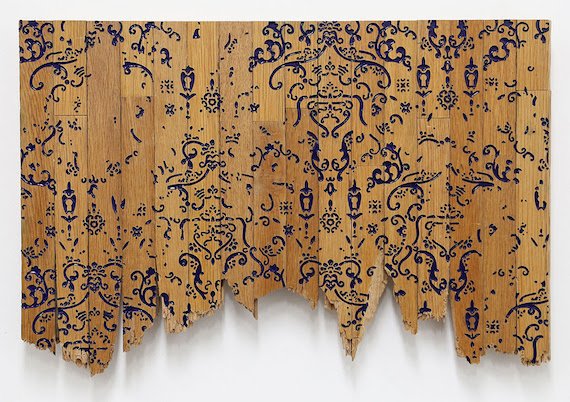The Huntington Library, Art Collections, and Botanical Gardens will highlight the largest private collection of color lithography in the United States with the exhibition “The Color Explosion: Nineteenth-Century American Lithography from the Jay T. Last Collection,” on view Oct. 17, 2009–Feb. 22, 2010, in the MaryLou and George Boone Gallery. Color lithography revolutionized the printing industry in 19th-century America and brought art, literature, and music to the masses. The exhibition features about 250 objects, including advertising posters, art prints, calendars, children’s books, product labels, sales catalogs, sheet music, toys and games, and trade cards.
 The Jay T. Last collection—about 135,000 objects in all—has never before been on public view, and is a promised gift to The Huntington. “The collection opens a wide window onto the developing field of graphic arts as a means of expressing cultural ideas,” says David Zeidberg, Avery Director of the Library.
The Jay T. Last collection—about 135,000 objects in all—has never before been on public view, and is a promised gift to The Huntington. “The collection opens a wide window onto the developing field of graphic arts as a means of expressing cultural ideas,” says David Zeidberg, Avery Director of the Library.
Lithography was invented in the 1790s by Alois Senefelder, a young German playwright who sought a cheaper and faster way to publish his plays. Unlike copper engraving or woodblock printing, the newer printmaking process did not require any cutting into metal or wood. Basically, an image was drawn with a greasy crayon onto a flat block of limestone. The lithographer applied water to the stone and then a layer of ink. The ink adhered to the greasy surface but nowhere else, as the lithographer then pressed paper against the block to produce an image.
“The printing technique was a great achievement,” says David Mihaly, curator of the exhibition and curator of lithographic history and ephemera at The Huntington, “but its full impact wasn’t felt until color entered the picture in the mid-19th century.”
Early in the 19th century lithographers used only black ink and recruited workers to hand-color illustrations for books. American print shops started applying multiple colors beginning in the 1840s, leading to the proliferation of color on book illustrations, sheet music, and maps. By the 1870s, salesmen were pitching products using graphic trade cards and catalogs, and women and men alike beautified their homes with purchases of color prints, city views, posters, and wall calendars.
The exhibition shows the veritable explosion of color that filtered to consumers in mid-19th century America. Among the items on view will be a sampling of lithography that found its way to the shelves of general stores, including labels from food cans, cigar boxes, and fruit crates. The invention of lithography has a direct link to the early history of branding and advertising, as manufacturers and merchants began to recognize the powerful appeal of a package over the actual product. Generic goods in barrels, jars, bins, and sacks were replaced by brand name products in boxes, cans, cartons, and wrappers. Color-lithographed labels provided crucial identification and promotion in a sea of consumer choices.
Lithography not only changed the way consumers interpreted the world but also the way merchants constructed the space for selling products. On cigar boxes, for example, large labels were pasted inside lids that were then opened and displayed on shelves and counters in tobacco shops, saloons, and hotels. Smaller labels on exterior lids and sides provided easy identification when boxes were closed. Cigar box labels remained a staple of lithographic production until American consumers traded cigars for cigarettes in the early 1900s and the need for labels shrank with the package size.
Color lithography dramatically altered a publishing world that had previously been constricted by the limits of hand coloring. Natural history books of mammals, birds, fish, flowers, and fruit abounded; gift books with color lithographed frontispieces and presentation pages commonly appeared; and frequent texts about scientific treatises, medical reports, government land surveys, and architecture made special use of color to convey complex information.
Lithographers also applied their skills to the depiction of current events. As advances in printing accelerated production and lowered costs, lithographed prints became popular news sources and helped launch the field of pictorial journalism. In one of the earlier examples of this trend, New York lithographer Henry Robinson produced Battle of Buena Vista shortly after that 1847 Mexican-American War confrontation.
“In short, color lithography transformed American culture,” says Mihaly. The ubiquity of examples from the Last Collection extends to seed catalogs, sheet music, and toys and games. The well-known game pioneer Milton Bradley got his start as a lithographer. In the early 1860s, he created and printed a simple lithographed board game called The Checkered Game of Life. Bradley continued as a general lithographer of labels, posters, and book illustrations but also became one of America’s biggest game manufacturers by the 1870s and helped launch the American toy industry.
About The Huntington
The Huntington Library, Art Collections, and Botanical Gardens is a collections based research and educational institution serving scholars and the general public. More information about the Huntington can be found online at www.huntington.org.
Image: Label for H. H. Reynolds’ Red Elephant tobacco, printed by Isaac Friedenwald (Baltimore), ca. 1885



